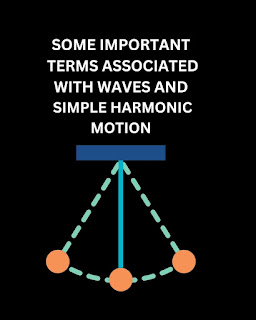Properties of sound
Sound: The disturbance produced by the particles of matter about
their mean position is called sound. sound is a mechanical property of matter
which means that the WAVES of sound need a medium for their propagation.
Without any medium sound does not propagate, which means that sound can not
travel in a vacuum.
Production of sound: As you know sound is produced by the
disturbance of particles of matter about their mean position, so without the
disturbance sound can not be generated. So for the production of sound you must
produce disturbance in the particles.
Transmission of sound: Sound is a longitudinal mechanical wave which
means that the particles and the wave propagation are parallel to each other or
in other words wave propagation and the particles have o0 angle.
Detection of sound: Sound can be detected by various objects means ear is the one such biological organ. The ear converts the sound wave to the hearing sense. There are different instruments are used to convert the sound wave to the hearing sense. Such mobile phones have a receiver that converts the electromagnetic wave to hearing sounds.
There are different
characteristics of sound which are given below one by one:
Pitch: The characteristics by which we can distinguish two sounds
of the same instrument but different frequencies. Pitch is the subjective
property of an object while frequency is the objective property of the object.
Pitch depends upon the frequency of an object which means that the higher the
frequency higher the pitch and the lower the frequency, the lower the pitch
that’s why women sounds are shrill and men's sounds are grave so which means
that women have higher frequency so women have higher pitch and men have
smaller frequency so men have smaller pitch.
Loudness: The greater the sound energy, the greater will be the
loudness. With the help of loudness, we can easily determine which sound is louder.
Loudness is explained by the amplitude which means that the more the amplitude,
the more loudness. Loudness depends upon the following factors which are given
below.
1) The area of the vibrating body: When
the area of the vibrating body increases the loudness of the object will increase.
2) Distance from the source of the sound: Distance
increases the loudness decreases and vice versa which means that distance and
loudness are inversely proportional tpo each other.
3) Material through which sound is traveling: Loudness
is different in different materials which means that loudness depends upon the
different material.
Quality: It is the property of an object by which we can distinguish
the same loudness and same pitch.
With the help of this property of
the sound, we can easily determine the sound e.g we can easily differentiate
the sound of piano and flute.
Sound intensity: The intensity of the sound is the amount of energy
passing through per unit area is called sound intensity. The unit of intensity Is
watt and it is the large unit we used a small unit is picowatt. Intensity is an
objective property of the sound which means that intensity is the same for all
object.













.png)
.png)



